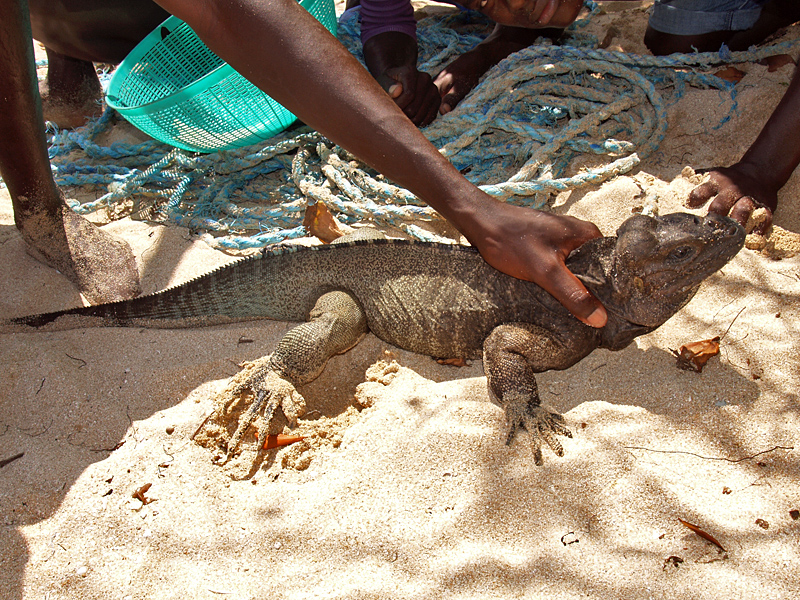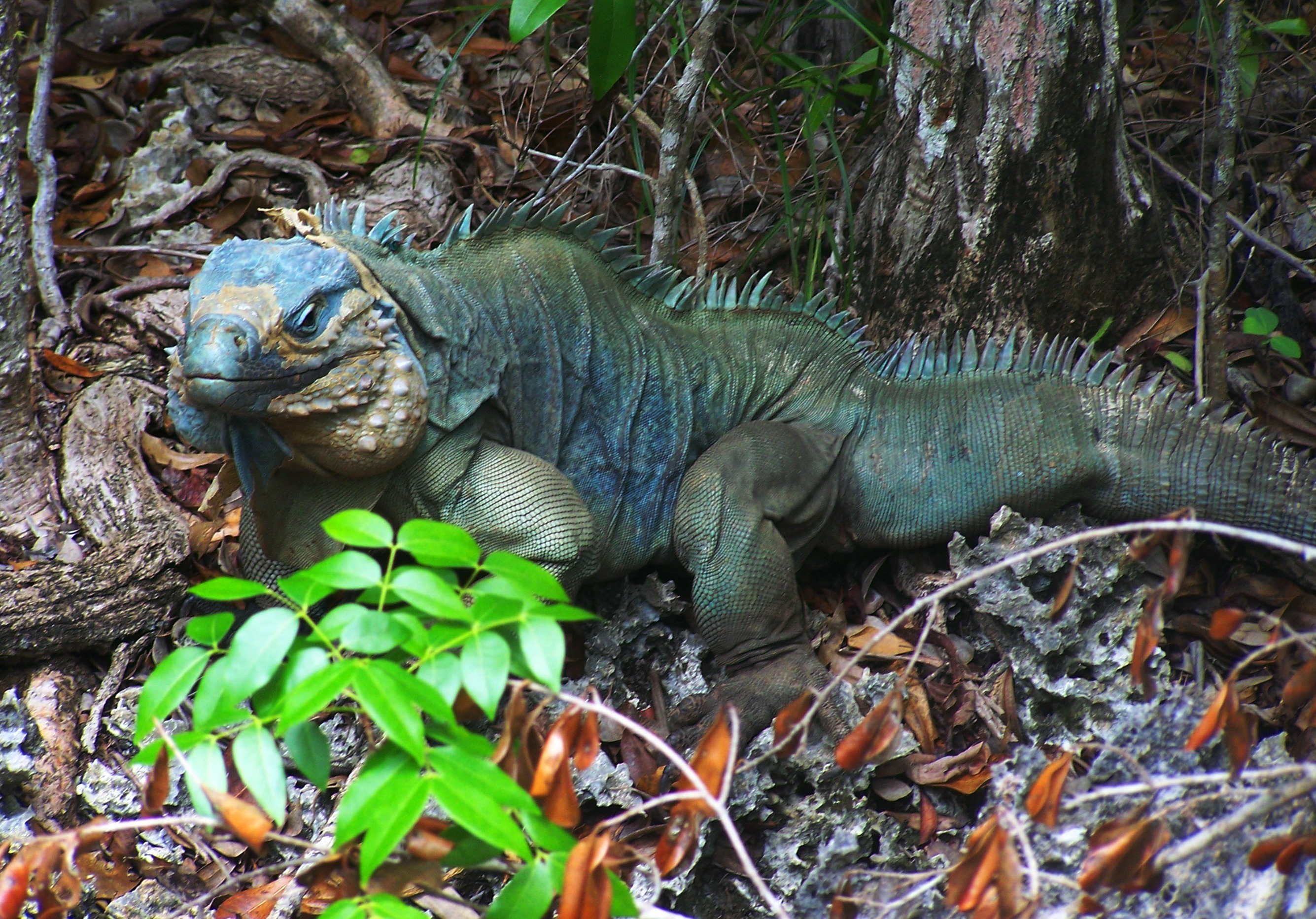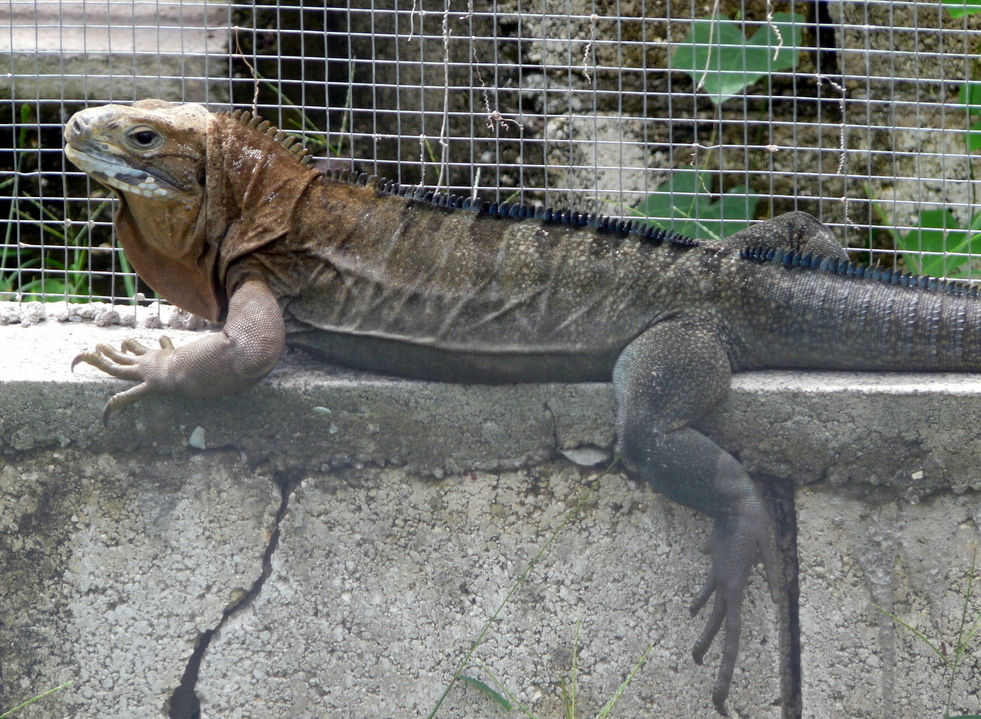|
Cyclura
''Cyclura'' is a genus of lizards in the family Iguanidae. Member species of this genus are commonly known as "cycluras" or more commonly as rock iguanas and only occur on islands in the West Indies. Rock iguanas have a high degree of endemism, with in most cases a single species or subspecies restricted to an individual island. Taxonomy The genus ''Cyclura'' was first circumscribed by Richard Harlan in 1825 to include two new species of lizard: ''C. carinata'' and ''C. teres''. ''C. teres'' eventually turned out to be a junior synonym of '' Ctenosaura acanthura''. In the 20th century there were eight recognised species of ''Cyclura'' and nine additional subspecies (one extinct) besides the nominotypical subspecies. Recently, certain subspecies were elevated to species status. Currently, there are ten species in this genus. Habitat Rock iguanas most often inhabit subtropical zones, of Caribbean island dry forest biomes. These landscapes are characterised by rocky outcrops, ... [...More Info...] [...Related Items...] OR: [Wikipedia] [Google] [Baidu] |
Cyclura Nubila
The Cuban rock iguana (''Cyclura nubila''), also known as the Cuban ground iguana or Cuban iguana, is a species of lizard of the iguana family. It is the second largest of the West Indian rock iguanas (genus ''Cyclura''), one of the most endangered groups of lizards. A herbivorous species with a thick tail and spiked jowls, it is one of the largest lizards in the Caribbean. The Cuban iguana is distributed throughout the mainland of Cuba and its surrounding islets with a feral population thriving on Isla Magueyes, Puerto Rico. A subspecies is found on the Cayman Islands of Little Cayman and Cayman Brac. Females guard their nest sites and one population nests in sites excavated by Cuban crocodiles. As a defence measure, the Cuban iguana often makes its home within or near prickly-pear cacti. The numbers of iguanas have been bolstered as a result of captive-breeding and other conservation programs. ''C. nubila'' has been used to study evolution and animal communication, and ... [...More Info...] [...Related Items...] OR: [Wikipedia] [Google] [Baidu] |
Cyclura Cychlura Inornata In The Bahamas
''Cyclura'' is a genus of lizards in the family Iguanidae. Member species of this genus are commonly known as "cycluras" or more commonly as rock iguanas and only occur on islands in the West Indies. Rock iguanas have a high degree of endemism, with in most cases a single species or subspecies restricted to an individual island. Taxonomy The genus ''Cyclura'' was first circumscribed by Richard Harlan in 1825 to include two new species of lizard: ''C. carinata'' and ''C. teres''. ''C. teres'' eventually turned out to be a junior synonym of ''Ctenosaura acanthura''. In the 20th century there were eight recognised species of ''Cyclura'' and nine additional subspecies (one extinct) besides the nominotypical subspecies. Recently, certain subspecies were elevated to species status. Currently, there are ten species in this genus. Habitat Rock iguanas most often inhabit subtropical zones, of Caribbean island dry forest biomes. These landscapes are characterised by rocky outcrops, ... [...More Info...] [...Related Items...] OR: [Wikipedia] [Google] [Baidu] |
Cyclura Cornuta
The rhinoceros iguana (''Cyclura cornuta'') is an endangered species of iguana that is endemic to the Caribbean island of Hispaniola (shared by Haiti and the Dominican Republic) and its surrounding islands. A large lizard, they vary in length from , and skin colours range from a steely grey to a dark green and even brown. Their name derives from the bony-plated pseudo-horn or outgrowth which resembles the horn of a rhinoceros on the iguana's snout. It is known to coexist with the Ricord's iguana (''C. ricordii''); the two species are the only taxa of rock iguana to do so. Taxonomy The rhinoceros iguana is a species of lizard belonging to the genus ''Cyclura''. The rhinoceros iguana's specific name, ''cornuta'', is the feminine form of the Latin adjective ''cornutus'', meaning "horned" and refers to the horned projections on the snouts of males of the species. The species was first identified by Pierre Joseph Bonnaterre in 1789. In addition to the nominate race (''C. c. cornu ... [...More Info...] [...Related Items...] OR: [Wikipedia] [Google] [Baidu] |
Rhinoceros Iguana
The rhinoceros iguana (''Cyclura cornuta'') is an endangered species of iguana that is endemic to the Caribbean island of Hispaniola (shared by Haiti and the Dominican Republic) and its surrounding islands. A large lizard, they vary in length from , and skin colours range from a steely grey to a dark green and even brown. Their name derives from the bony-plated pseudo-horn or outgrowth which resembles the horn of a rhinoceros on the iguana's snout. It is known to Sympatry, coexist with the Ricord's iguana (''C. ricordii''); the two species are the only taxon, taxa of rock iguana to do so. Taxonomy The rhinoceros iguana is a species of lizard belonging to the genus ''Cyclura''. The rhinoceros iguana's species, specific name, ''cornuta'', is the feminine form of the Latin adjective ''cornutus'', meaning "horned" and refers to the horned projections on the snouts of males of the species. The species was first identified by Pierre Joseph Bonnaterre in 1789. In addition to the nomin ... [...More Info...] [...Related Items...] OR: [Wikipedia] [Google] [Baidu] |
Cyclura Nubila Caymanensis
''Cyclura nubila caymanensis'', the Lesser Caymans iguana, Cayman Brac iguana, Cayman Island brown iguana or Sister Isles iguana, is a critically endangered subspecies of the Cuban iguana ('' Cyclura nubila''). It is native to two islands to the south of Cuba: Cayman Brac and Little Cayman, which are also known as the Sister Isles due to their similar shapes and close proximity to each other. The population of this subspecies has been impacted by habitat encroachment by human development and is likely being destroyed due to predation by cats (''Felis domesticus''), the population on Cayman Brac has remained particularly small for decades. Taxonomy The Lesser Caymans iguana, ''Cyclura nubila caymanensis'', is only found on the islands of Little Cayman and Cayman Brac. It is a subspecies of Cuban iguana. This subspecies has been introduced to Grand Cayman, where it has interbred with that island's endemic blue iguana (''C. lewisi''). Its specific name, ''nubila'', is Latin for ' ... [...More Info...] [...Related Items...] OR: [Wikipedia] [Google] [Baidu] |
Cyclura Cychlura Inornata
''Cyclura cychlura inornata'', the Allen Cays rock iguana or Allen Cays iguana, is a subspecies of the northern Bahamian rock iguana that is found on Allen's Cay and adjacent islands in the Bahamas. Its status in the IUCN Red List is critically endangered. The population has been growing over the last century. Although it was considered extinct in 1916, there are as of 2018 at least 482 mature adult animals counted on two islands, Leaf Cay and U Cay, and a few hundred on at least five other nearby islands where they have recently spread to by unknown means (introduced by biologists in one case), as well as many juveniles. Although this is a large lizard at 75cm, within one generation after some arrived on the small island of Allen's Cay, these iguanas grew to be twice as large here than those on other islands, which is believed to be due to the large amount of guano (bird droppings) this particular island receives. These particular giants have now been largely eliminated due to ... [...More Info...] [...Related Items...] OR: [Wikipedia] [Google] [Baidu] |
Blue Iguana
The blue iguana (''Cyclura lewisi''), also known as the Grand Cayman ground iguana, Grand Cayman blue iguana or Cayman Island rock iguana, is an endangered species of lizard which is endemic to the island of Grand Cayman. It was previously considered to be a subspecies of the Cuban iguana, '' Cyclura nubila'', but in a 2004 article Frederic J. Burton reclassified it as a separate species because according to him the genetic differences discovered four years earlier between the different ''C. nubila'' populations warranted this interpretation. The blue iguana is one of the longest-living species of lizard (possibly up to 69 years). The preferred habitat for the blue iguana is rocky, sunlit, open areas in dry forests or near the shore, as the females must dig holes in the sand to lay eggs in June and July. A possible second clutch is laid in September. The blue iguana's herbivorous diet includes plants, fruits, and flowers. Its color is tan to gray with a bluish cast that i ... [...More Info...] [...Related Items...] OR: [Wikipedia] [Google] [Baidu] |
Cyclura Cychlura Figginsi
''Cyclura cychlura figginsi'', known by the common name of guana and sometimes called the Exuma Island iguana in the international literature, is a subspecies of the northern rock iguana, ''C. cychlura'', that is found on the Exuma island chain in the Bahamas with an estimated wild population of 1,300 animals in 2004, it has been listed on the IUCN Red List as critically endangered. Taxonomy ''Cyclura cychlura figginsi'' is a subspecies of the northern Bahamian rock iguana, ''Cyclura cychlura''. Its subspecific name commemorates the American biologist J. D. Figgins. In the late 19th century the American naturalist Charles Johnson Maynard mentioned that populations of iguanas still existed on the small island Bitter Guana Cay, being the namesake of the toponym, and he also mentioned that he thought it was possible this population could be named as a new species. In 1923 Thomas Barbour obliged. In 1975 Albert Schwartz and Richard Thomas subsumed it as a subspecies of ''C. cyc ... [...More Info...] [...Related Items...] OR: [Wikipedia] [Google] [Baidu] |
Iguanidae
The Iguanidae is a family of lizards composed of the iguanas, chuckwallas, and their prehistoric relatives, including the widespread green iguana. Taxonomy Iguanidae is thought to be the sister group to the collared lizards (family Crotaphytidae); the two groups likely diverged during the Late Cretaceous, as that is when ''Pristiguana'' and ''Pariguana'', the two earliest fossil genera, are known from. The subfamily Iguaninae, which contains all modern genera, likely originated in the earliest Paleocene, at about 62 million years ago. The most basal extant genus, '' Dipsosaurus,'' diverged from the rest of Iguaninae during the late Eocene, about 38 million years ago, with '' Brachylophus'' following a few million years later at about 35 million years ago, presumably after its dispersal event to the Pacific. All other modern iguana genera formed in the Neogene period. A phylogenetic tree of Iguaninae is shown here: Description Iguanas and iguana-type species are divers ... [...More Info...] [...Related Items...] OR: [Wikipedia] [Google] [Baidu] |
Cyclura Carinata Bartschi
''Cyclura carinata bartschi'', commonly known as Bartsch's iguana or the Booby Cay iguana, is a subspecies of lizard in the family Iguanidae. The subspecies is endemic to a single cay, Booby Cay, in The Bahamas . Taxonomy Bartsch's iguana, ''Cyclura carinata bartschi'', was first described by American herpetologist Doris M. Cochran in 1931. It has some minor morphological characteristics which differ from the Turks and Caicos rock iguana, ''Cyclura carinata''. Its specific name, ''carinata'', means "keeled" and refers to the animal's scalation. Its subspecific name, ''bartschi'', was given in honor of Silesian- American zoologist Paul Bartsch. Beolens B, Watkins M, Grayson M (2011). ''The Eponym Dictionary of Reptiles''. Baltimore: Johns Hopkins University Press. xiii + 296 pp. . (''Cyclura carinata bartschi'', p. 18). Further phylogenic study of mtDNA haplotypes by scientists at Utah Valley State College in 2007, determined that this animal should not be considered a val ... [...More Info...] [...Related Items...] OR: [Wikipedia] [Google] [Baidu] |
Cyclura Collei
The Jamaican iguana (''Cyclura collei''), also known commonly as Colley's iguana, is a large species of lizard in the family Iguanidae. The species is endemic to Jamaica. It is critically endangered, even considered extinct between 1948 and 1990. Once found throughout Jamaica and on the offshore islets Great Goat Island and Little Goat Island, it is now confined to the forests of the Hellshire Hills. Etymology The specific name, ''collei'', is in honor of someone named Colley. John Edward Gray, who originally described this species in 1845, referred to it as "Colley's Iguana". Unfortunately, Gray did not further specify who Colley was. Beolens, Bo; Watkins, Michael; Grayson, Michael (2011). ''The Eponym Dictionary of Reptiles''. Baltimore: Johns Hopkins University Press. xiii + 296 pp. . ("Colley's Iguana ''Cyclura collei'' ", pp. 56-57). Anatomy and morphology The Jamaican iguana is a large, heavy-bodied lizard, primarily green to salty blue in color with darker olive-gree ... [...More Info...] [...Related Items...] OR: [Wikipedia] [Google] [Baidu] |








